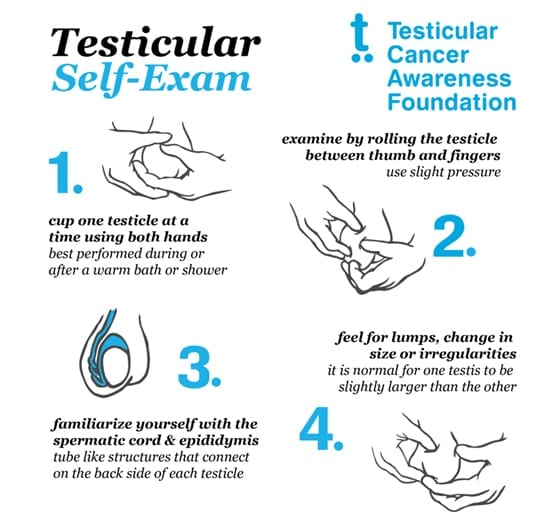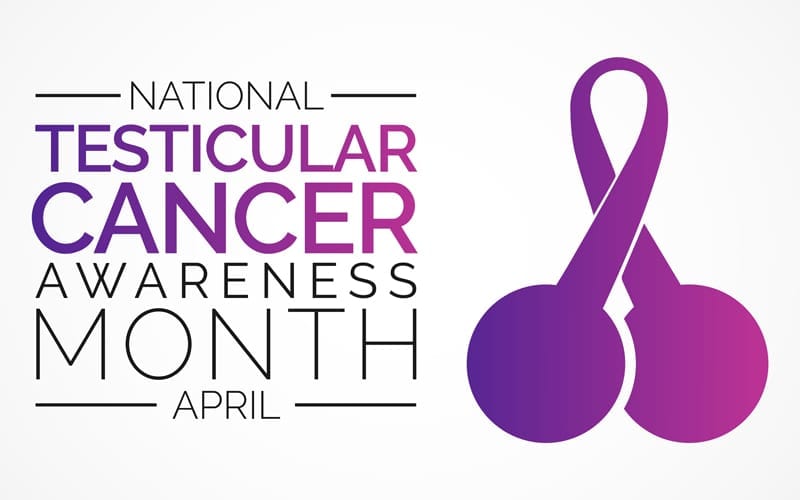April is Testicular Cancer Awareness Month and should serve as a reminder that a simple self-exam can potentially save your life. Being aware of common signs and symptoms and going to the doctor when you’re unsure is the best way to be proactive about your testicular health.
Below are some important facts on this cancer type and instructions for performing a self-exam.
The Fast Facts About Testicular Cancer:
- It is estimated that 8,000 to 10,000 men in the United States will develop testicular cancer every year1
- The likelihood of developing testicular cancer is about 1 in 250 throughout your lifetime2
- The American Cancer Society’s estimates for testicular cancer in the United States for 2021 are3:
- ~9,470 new cases of testicular cancer diagnosed
- ~440 deaths from testicular cancer
- The cure rate is excellent (greater than 95%) 1
- Testicular cancer affects teens and younger men, especially those between ages 15 and 35. But, it can occur at any age.4
- The average age at the time of diagnosis of testicular cancer is about 33. This is largely a disease of young and middle-aged men, but about 6% of cases occur in children and teens, and about 8% occur in men over the age of 55.
- Testicular cancer may be more common in white men than in black men5
Performing a Testicular Self-Examination:
A testicular self-exam is an inspection and examination of the appearance and feel of your testicles. The self-exam is quick and to perform, and should be done on a monthly basis. Men typically perform the examination standing in the shower or while in front of a mirror. In completing an exam, you may be able to discover changes in the testicles early on and receive a proper assessment, diagnosis and treatment if warranted.
Once you become educated about your testicular look, feel, and texture, you will be able to notice and address any subtle changes. More often than not, some changes in the testicles could be due to an infection or cyst. These benign, non-cancerous, conditions can be easily addressed by your health care professional. If testicular cancer is discovered by your health care professional, it may warrant further comprehensive or aggressive treatment. Routine testicular self-exams will allow you to better detect any changes in your testicles, whether it is lumps, bumps, or increased size or development of painful areas. It is important to have a greater awareness of the condition of your testicles; self-examination will assist in alerting you to any potential problems. If you detect lumps or other changes during a testicular self-exam, make an appointment with your health care professional.
From the Testicular Cancer Awareness Foundation6

1. https://www.hopkinsmedicine.org/health/conditions-and-diseases/testicular-cancer/testicular-cancer-statistics
2. https://www.nfcr.org/cancer-types/testicular-cancer/
3. https://www.cancer.org/cancer/testicular-cancer/about/key-statistics.html
4. https://www.mayoclinic.org/diseases-conditions/testicular-cancer-care/symptoms-causes/syc-20352986
5. https://www.cancercenter.com/cancer-types/testicular-cancer/risk-factors
6. https://www.testicularcancerawarenessfoundation.org/self-exam

